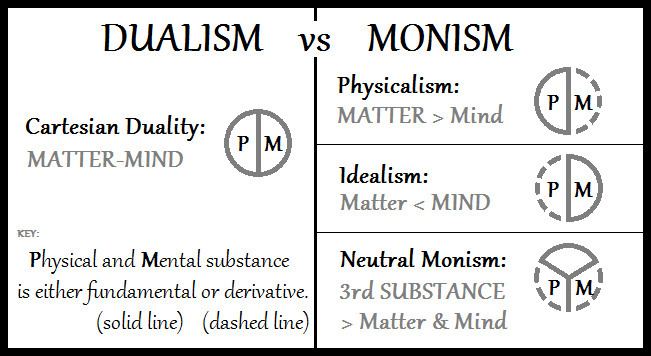 | ||
In the philosophy of mind, double-aspect theory is the view that the mental and the physical are two aspects of, or perspectives on, the same substance. It is also called dual-aspect monism. The theory's relationship to neutral monism is ill-defined, but one proffered distinction says that whereas neutral monism allows the context of a given group of neutral elements to determine whether the group is mental, physical, both, or neither, double-aspect theory requires the mental and the physical to be inseparable and mutually irreducible (though distinct).
Double-aspect theorists include:-
Pauli-Jung conjecture
From the work of Wolfgang Pauli and Carl G. Jung results a philosophical approach, which Harald Atmanspacher titles the Pauli-Jung conjecture, of dual-aspect monism which has a very specific further feature, namely that different aspects may show a complementarity in a quantum physical sense. That is, the Pauli-Jung conjecture implies that with regard to mental and physical states there may be incompatible descriptions of different parts that emerge from the whole. This stands in close analogy to quantum physics, where complementary properties cannot be determined jointly with accuracy.
Atmanspacher further refers to Paul Bernays' views on complementarity in physics and in philosophy when he states that "Two descriptions are complementary if they mutually exclude each other, yet are both necessary to describe a situation exhaustively."
